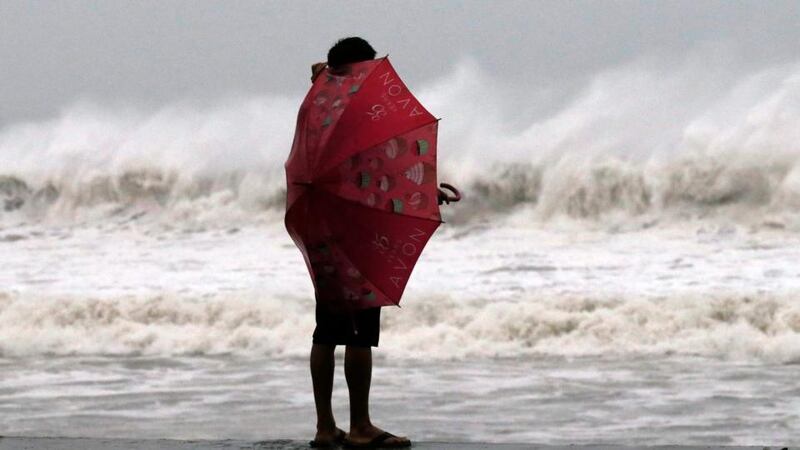Aid workers have described deserted streets and scenes of destruction in the Philippines as a typhoon started to work its way across the country.
Power has been down in Tacloban since mid-afternoon and families have been sheltering in schools, sports centres and other local buildings as Typhoon Hagupit began to make itself felt.
Carin van der Hor, international country director for the charity Plan in the Philippines, described Tacloban as a “ghost town” as residents braced themselves for the storm.


With maximum sustained winds of 109mph and gusts of 130mph, Hagupit made landfall in Dolores, a coastal town facing the Pacific in Eastern Samar province, according to the Philippines' weather agency. There were no immediate reports of casualties.
However, Maulid Warfa, head of Unicef’s Tacloban field office, said telephone lines had been down in the Eastern Samar areas of Guiuan and Borongan, meaning that they could not find out if there had been any casualties.
Speaking from Tacloban, Mr Warfa said: “We’re in this dark building and it’s raining heavily and there’s no electricity and we are using candles.
“We have a generator and it has been working earlier but because of the rain and the flood and power problems we have switched it off. It’s too dangerous to use the generator.”
He described hearing loud noises and bangs from outside their building and said his colleagues had seen roofs blown off.
Despite being in a five-storey concrete building which he described as possibly the “strongest in town”, Mr Warfa said: “As we were sitting here we could even feel the building shaking.”
He added: “Our concern now is not us sitting in this building. Our concern is for the little children who have had to go through this experience for the second time in 13 months.”
Typhoon Haiyan devastated the Philippines when it hit last year, killing thousands of people.
Sarah Dransfield, a spokesperson for Oxfam, said Hagupit was expected to be “category 3 or 4, which isn’t as strong as Haiyan, but the problem is it is moving much slower”.
She added: “If it is moving slowly it means the wind and rain are impacting an area for longer.”
Mr Warfa said: “Estimates are difficult to make but many thousands of families and at least millions of people will be affected by this.
“The good news is because of lessons learnt from the last experience, there has been massive preparation by both the aid agencies and the government.”
He said that areas which were hit by Typhoon Haiyan could face “double tragedy” if they were hit again by Hagupit.
Also in Tacloban, Jennifer MacCann, operations director for World Vision’s response to Typhoon Hagupit, said: “It’s really tough for people who went through a huge disaster here only a year ago and rebuilt - only to have their lives essentially smashed by another typhoon.
“Everyone was off the streets even yesterday and a lot of people have moved, but the centres don’t have enough bedding, food or water.
“There’s a lot wind, a lot of rain, some roofs have blown off and there’s debris already in the streets. It’s going to be a long night ahead.”
Even in Manila, where the storm has yet to hit, World Vision aid worker Rhonda Hirst said the city had been "a bit eerie all day".
“You can definitely feel winds in Manila. It’s not normal in the Philippines to feel such a strong gust of wind. It’s very noticeable.”
She added: “I popped out to get dinner earlier and there was hardly anyone at the busy mall and that is unusual because it’s the weekend and it’s coming up to Christmas.”
Ms Hirst said she was worried about the consequences of the Typhoon: “It was an eerie feeling today when I went out I have to be honest I did feel a bit unnerved. I’m worried for the staff that I work, with my close friends. I’m pretty nervous for them.”
Despite the fact that it has been little over a year since the last devastating typhoon hit the Philippines, she said Filipinos were still thinking positively: “Filipinos have a really great attitude even through tough times.
“I’ll say I’m worried about somebody, they say we have got to laugh and smile.
“People are really keeping their heads up. They’re still really positive as much as they can be. Even in the streets of Tacloban people were telling me that everyone was smiling.”
Agencies









